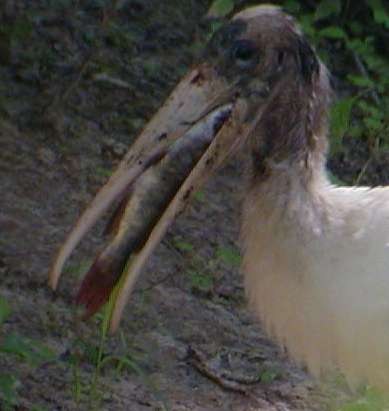
Wood Storks, Mycteria americana, Clyde, Wayne Co., New
York, 25 August 2001.
These pictures were taken by my son Jay and me with an Olympus D-450 digital camera through my Swarovski HD-80 spotting scope.
All photos © Kevin J. McGowan
Wanderers from southern breeding grounds, these 6 young Woods Storks were rare visitors to New York state (about 20 records, slightly more than half up-state). They were first brought to the attention of birders on 24 August, but had been present a few days before. It turns out that up to 16 young storks were in the area, and were seen in different ponds around the same area. They may have been present in the area since July.
Wood Storks breed very locally (in colonies only) along the gulf coast from southern Sonora, Mexico to Florida, and up the Atlantic coast to South Carolina (current colonies only in FL, GA, and SC; Coulter et al. 1999, BNA no. 409). They also breed in the lowlands of Middle America (including offshore islands), in Cuba and Hispaniola, and through South America west of the Andes to western Ecuador and east of the Andes to northern Argentina. They wander north throughout North America periodically (e.g., to CA, ID, AZ, AR, TN, MT, WY, CO, SD, IA, WI, IN, MI, NY, ME, Ontario, British Columbia, New Brunswick; and south to Chile!; AOU1998); most northern records are of immature birds.
Dependent upon falling water levels to concentrate fish and other aquatic animals, breeding is unpredictable but can be in late winter and early spring in Florida. After breeding is over storks may wander north. These northern movements coincide with the rainy season in Florida, and consequently with rising water levels that make food harder for them to find. New York records of Wood Storks range from April through September, but most are in June, July and August. Storks in the eastern US are probably from the US breeding populations; those in western US likely come from Mexican or Central American populations. Most of the farthest records are of immature individuals.
I've seen Wood Storks in small ponds and on lawns in Florida, but this upstate New York setting seemed a little odd.
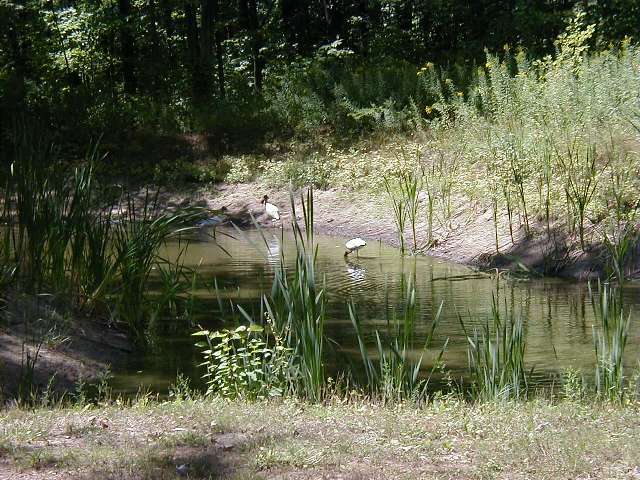
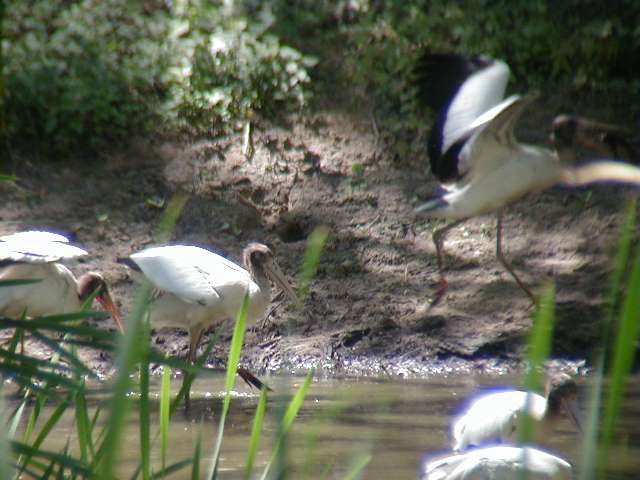
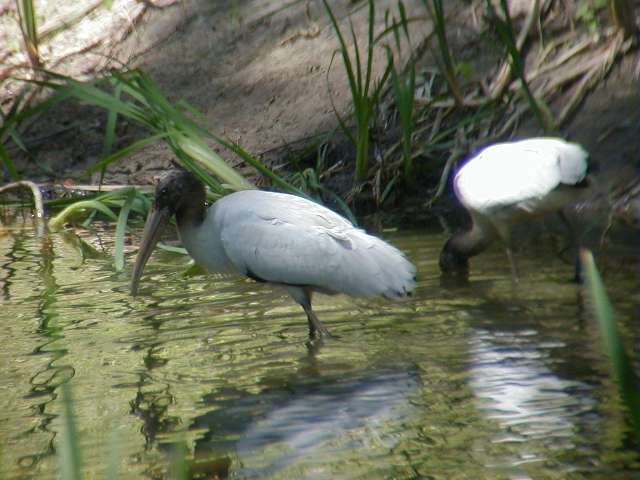
The feathered neck and pale yellow bill indicate that these storks are not fully mature. I am unable to decide from the description of plumages in Coulter et al. 1999 how to distinguish birds fledged this year from older immatures. Wood Storks take at least four years to attain full adult appearance.
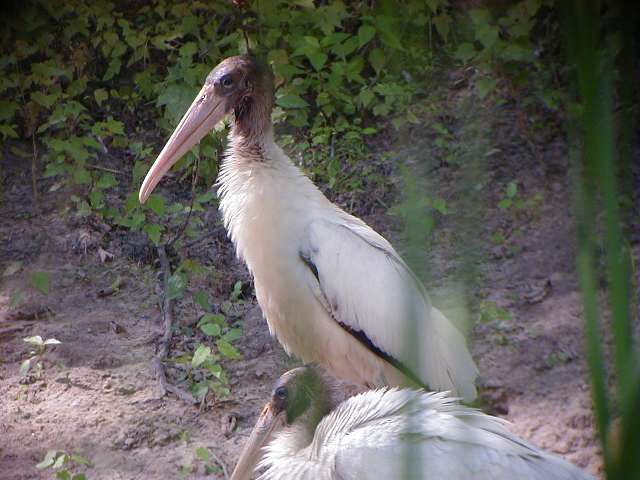
Wood Storks feel through shallow water to locate and grab their prey. These storks in Clyde were using their feet to push fish toward their bills. They seemed pretty efficient, and looked like they could clean out the pond pretty quickly.
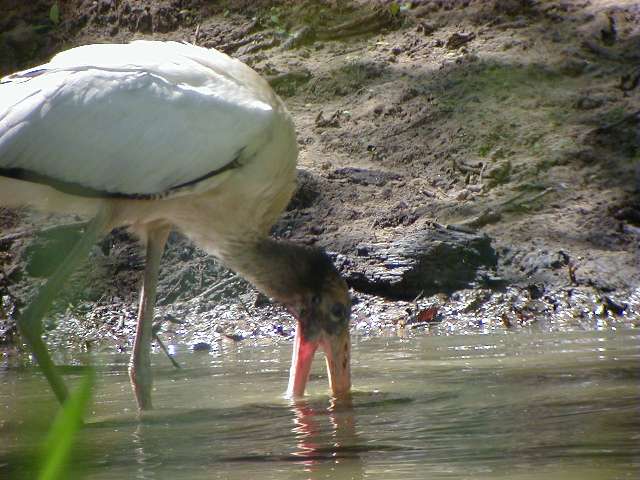
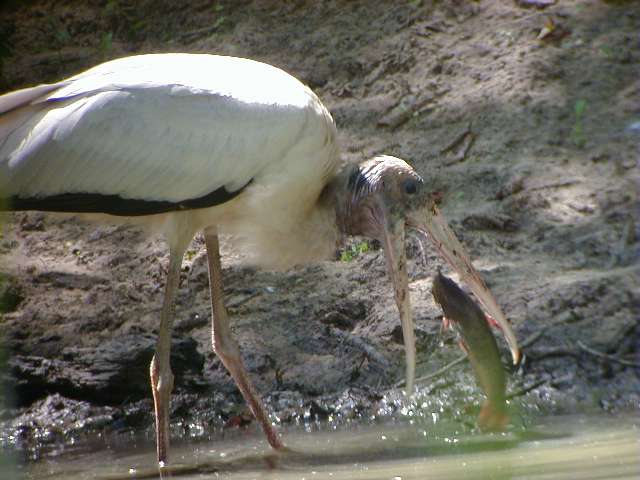
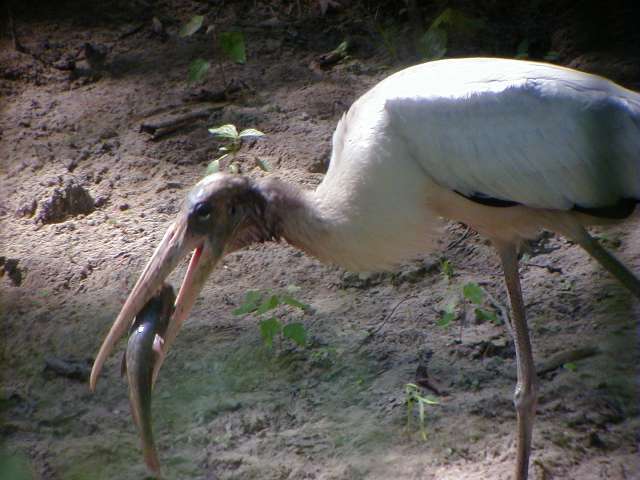
Happy Wood Stork.
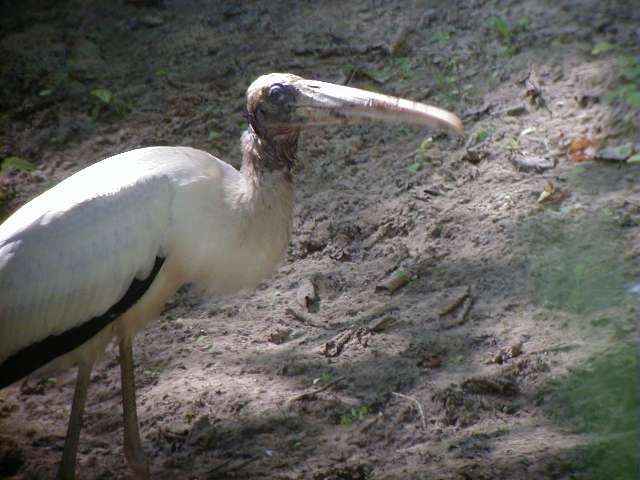
Return to the Bad Photos page.
Return to Kevin McGowan's home page.
Go to the Crow Page.